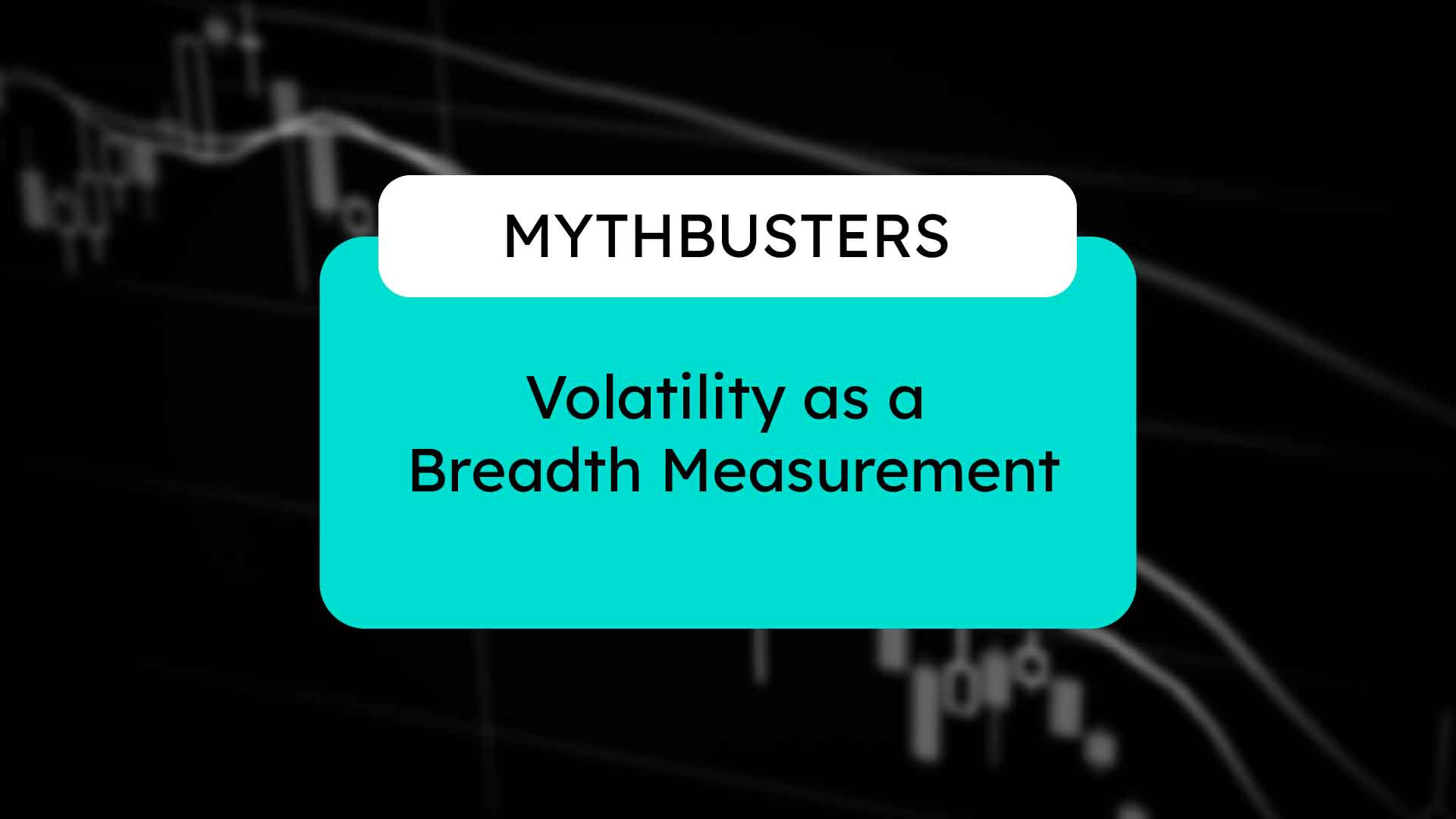
In our post in March of this year, “Is Volatility Always Bad?” we covered a number of topics, particularly how elevated volatility levels have historically indicated favorable returns over the following quarter following periods of extreme volatility. Additionally, we covered the concept of a volatility breakout: periods where volatility is so far outside its historical range that it can be considered “unusual.” In this post, we will apply the same concepts of volatility breakouts in the form of breadth analysis on the major equity indexes: the S&P 500, S&P 400, S&P 600, and the NASDAQ 100.
Before we dive into the testing and analysis, we must first lay out the foundational concepts of that which we are measuring. Recall from the post in March that we defined a volatility breakout as a one-month (21-day) Bollinger Bandwidth moving more than two standard deviations above its average. More simply, we are looking at the volatility of volatility.
Again, the theory here is simple; if volatility has expanded outside the upper limit of its historical one-month range, this can be considered an “event” that we can measure. Recall in our previous post that the cyclicality or “regime” aspect of volatility, in general, was a well-known market phenomenon.
While these “events” where volatility has expanded beyond its historical range are interesting when measured at the index level, what happens if apply these same concepts as a market breadth indicator for the components that make up the index? Are there any noteworthy historical developments, and if so, do they provide value? In this post, we seek to provide that context.
For this post, an unusually high reading in the percentage of components across the major indexes in a volatility breakout is defined as readings that have crossed above the +3 standard deviation mark of one-year readings. These events should be indicative of a historically rare occurrence. Since the breadth components are already calculated as a percentage, this normalizes what should be considered an unusually high reading.
S&P 500
For the S&P 500, there were 74 instances since 1969 where the one-year Z-score of the percentage of components in volatility breakouts crossed above the +3 standard deviation mark. Over the next quarter of trading, the median gain for the S&P 500 has been 2.72%, with a 68.49%-win rate. The 20th percentile returns come in at a loss of -2.92%. It’s worth noting that median gains have tended to peak 50 trading days out at 3.53% on a reduced 64.86%-win rate, with 20th percentile returns coming in at a loss of -3.83%.
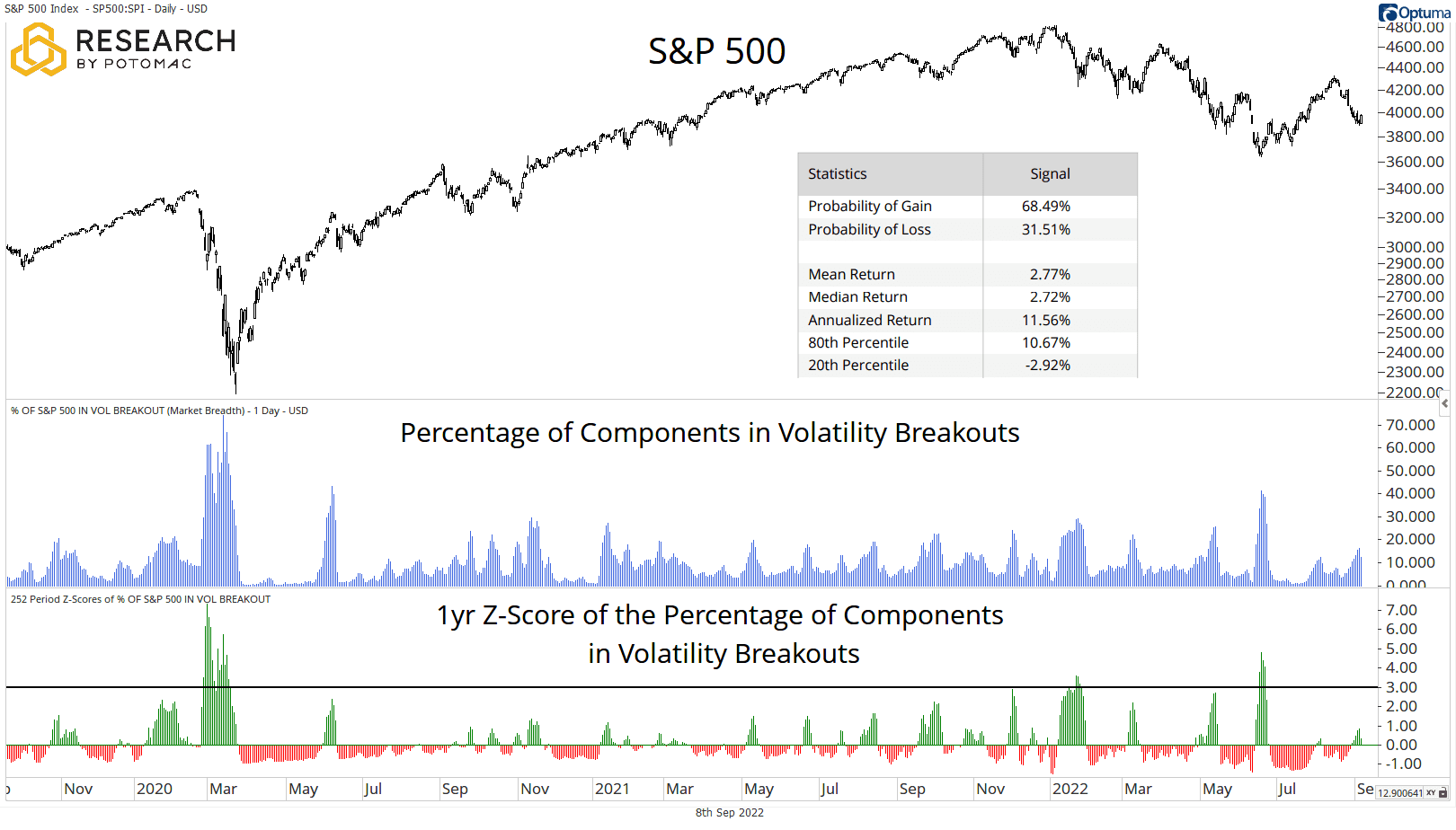
*Data as of 9/7/22 via Optuma
S&P 400
For the S&P 400, there were 38 instances since 1997 where the one-year Z-score of the percentage of components in volatility breakouts crossed above the +3 standard deviation mark. The median gain in the S&P 400 has been 3.06%, with a 70.00%-win rate over the following quarter of trading. The 20th percentile returns have seen a loss of -43bps. It’s worth noting that median gains have tended to peak 61 trading days out at 4.09% on an identical win rate, with 20th percentile returns coming in at a loss of -2.07%.
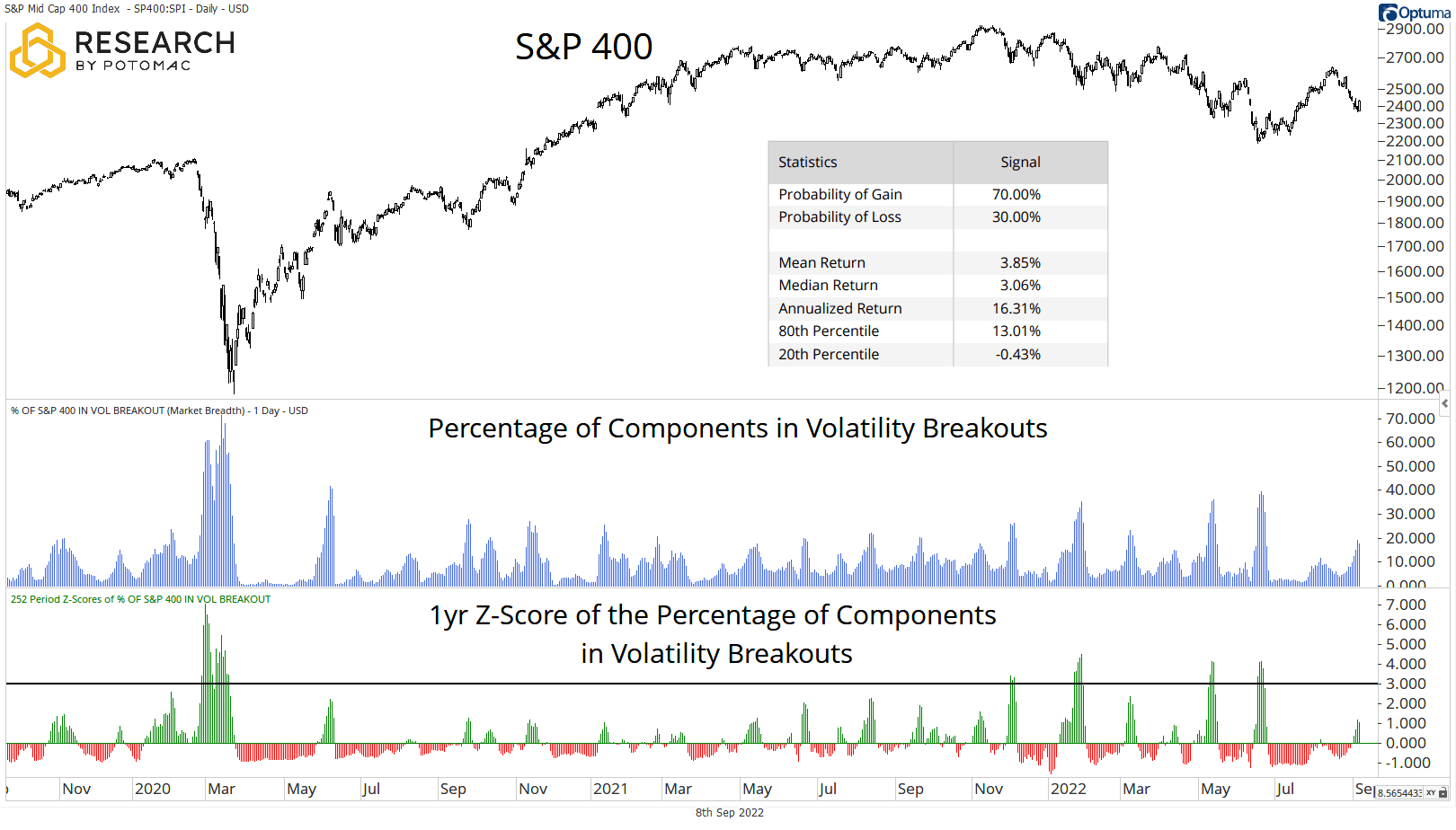
*Data as of 9/7/22 via Optuma
S&P 600
For the S&P 600, there were 39 instances since 1996 where the one-year Z-score of the percentage of components in volatility breakouts crossed above the +3 standard deviation mark. The median gain in the S&P 600 has been 4.55%, with a 65.79%-win rate over the following quarter of trading. The 20th percentile returns have come in at a loss of -4.76%. It’s worth noting that median gains have tended to peak 51 trading days out at 4.72% on an improved 69.23%-win rate, with 20th percentile returns coming in at -3.99%.
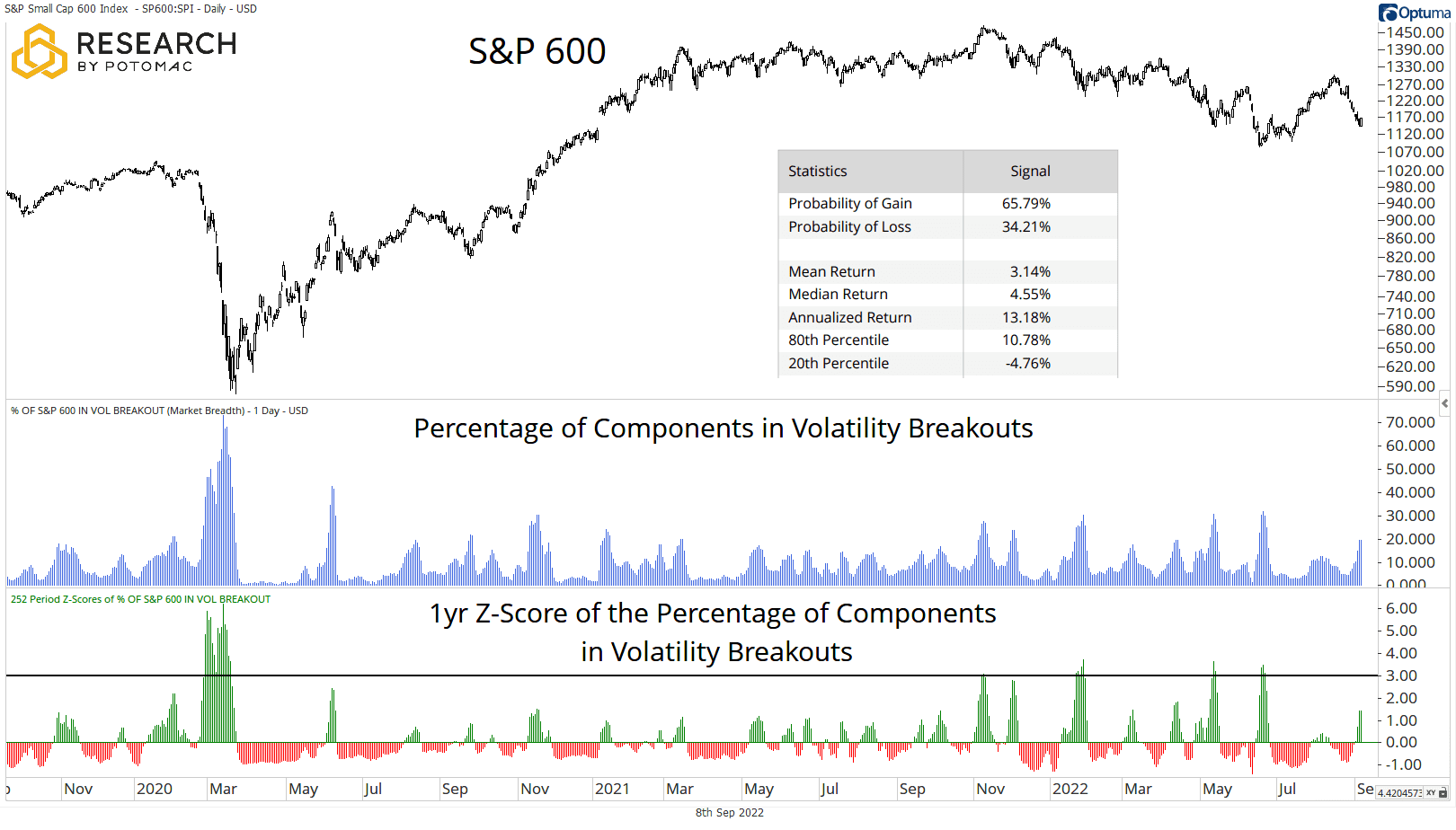
*Data as of 9/7/22 via Optuma
NASDAQ 100
For the NASDAQ 100, there were 70 instances since 1986 where the one-year Z-score of the percentage of components in volatility breakouts crossed above the +3 standard deviation mark. The median gain in the NASDAQ 100 has been 3.68%, with a 65.71%-win rate over the following quarter. The 20th percentile returns have been a loss of -4.01%. It’s worth noting that median gains have tended to peak 59 trading days out at 4.84% on a reduced 61.43%-win rate, with 20th percentile returns coming in at a loss of -5.34%.
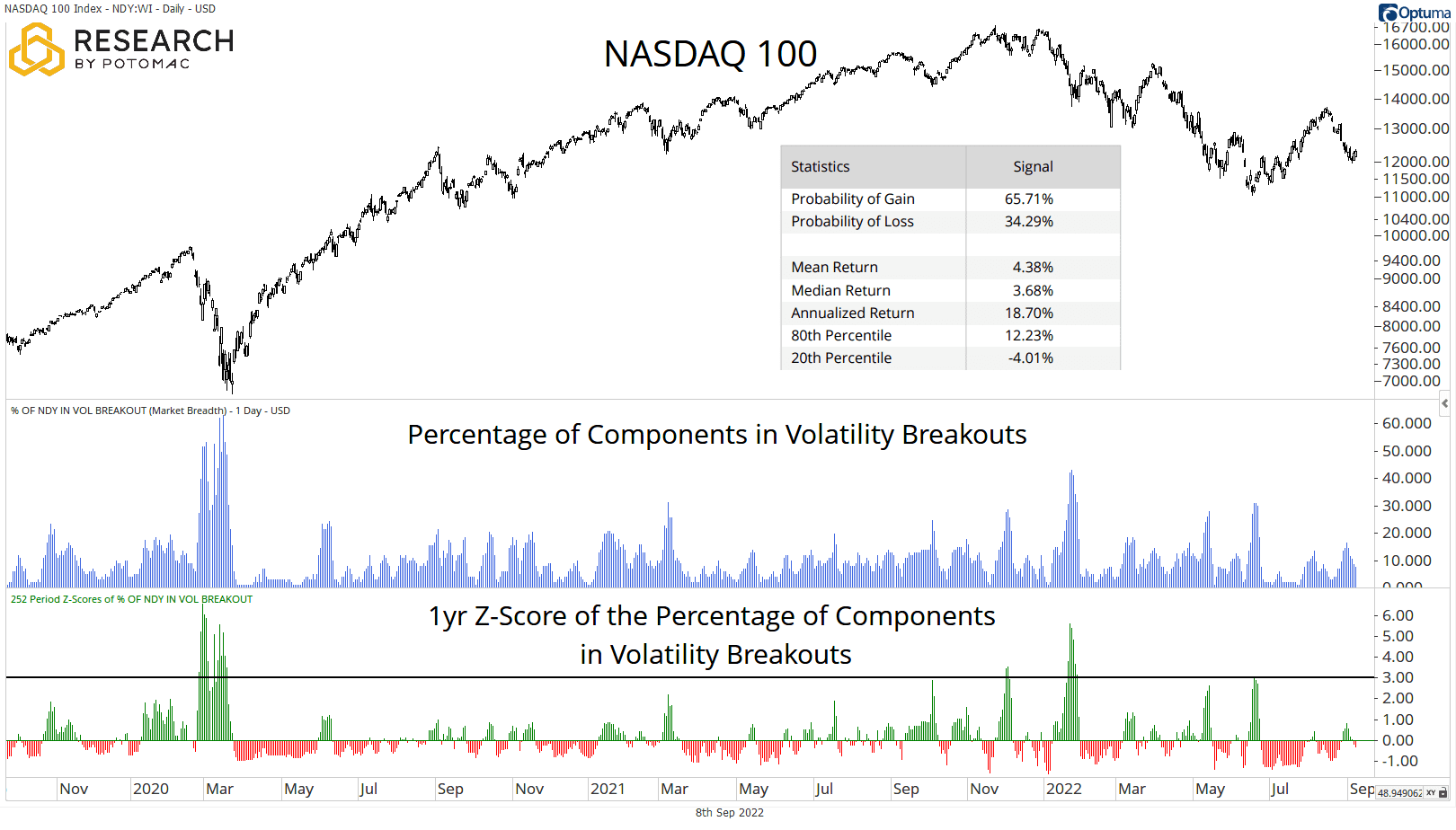
*Data as of 9/7/22 via Optuma
Bringing It All Together
For a variety of timeframes and across the major U.S. equity markets, extreme moves within individual index component volatility have historically led to favorable returns over the following quarter. At face value, these developments appear to be unanimously bullish. However, digging deeper into risk, note that 20th percentile returns have tended to be negative. Additionally, while an increase in the number of stocks within volatility breakouts can and do occur within market uptrends, it should be noted that, on average, these markets have historically declined, leading to the extremes of these readings. As with any signal or strategy, risk management should be paramount.
Potomac Fund Management (“Company”) is an SEC-registered investment adviser. This information is prepared for general information only and should not be considered as individual investment advice nor as a solicitation to buy or offer to sell any securities. This material does not constitute any representation as to the suitability or appropriateness of any investment advisory program or security. Please visit our FULL DISCLOSURE page. The company does not make any representations or warranties as to the accuracy, timeliness, suitability, completeness, or relevance of any information prepared by any unaffiliated third party, whether linked to the Company website or incorporated herein, and takes no responsibility for any of this information. The views of the Company are subject to change and the Company is under no obligation to notify you of any changes. Different types of investments involve varying degrees of risk, and there can be no assurance that the future performance of any specific investment or investment strategy will be profitable or equal to any historical performance level.
